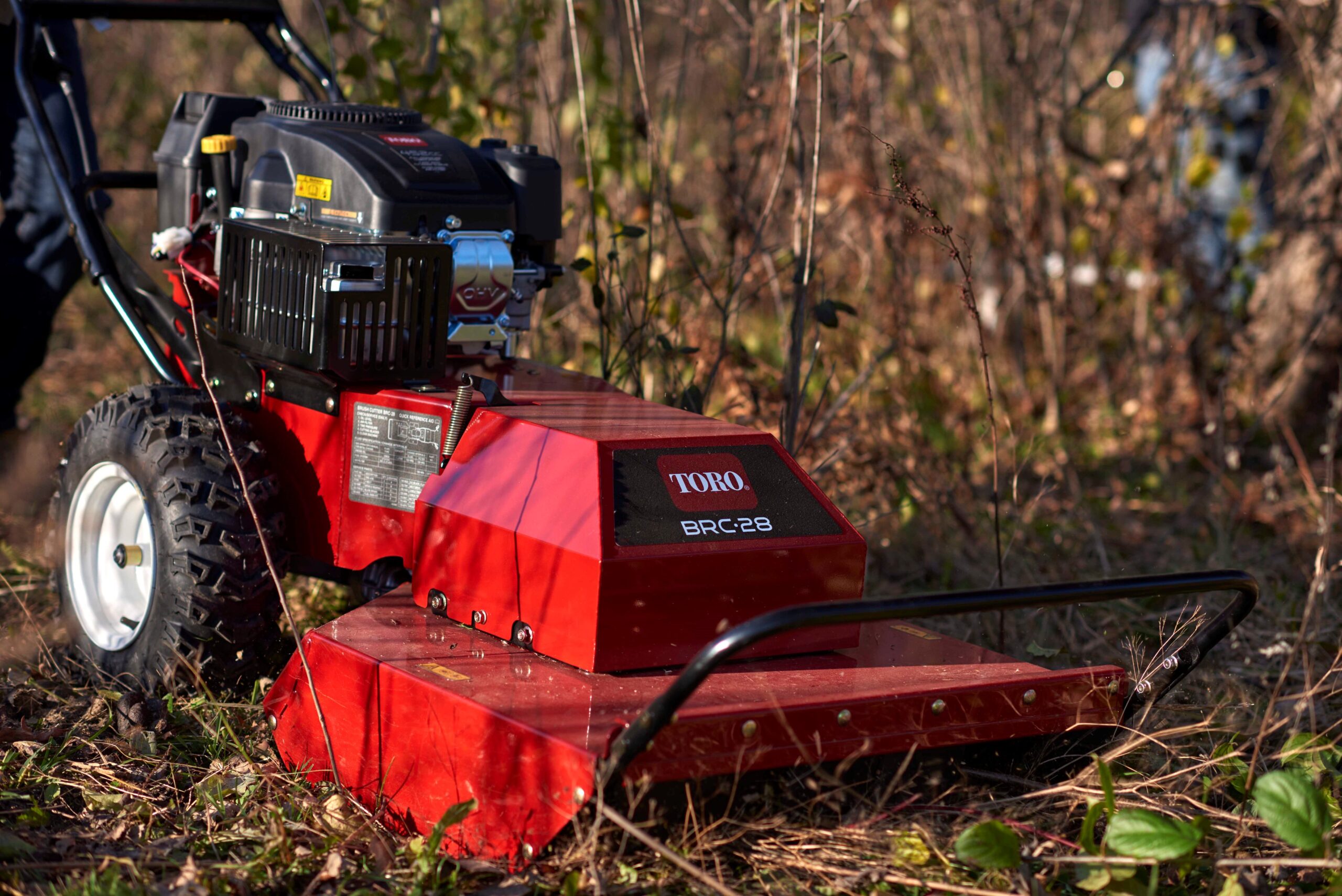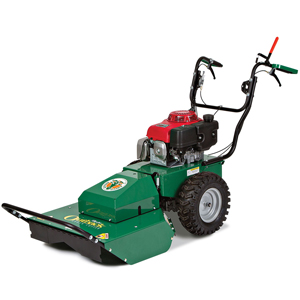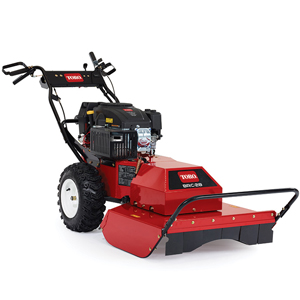Brush cutters are powerful outdoor tools designed to cut through thick vegetation that regular lawn mowers can’t handle. These versatile machines help clear overgrown areas, tall grass, dense weeds, and small saplings around your property. Unlike string trimmers that handle light work, brush cutters feature stronger motors and sturdy metal blades to tackle tougher jobs.
You’ll find various types of brush cutters on the market, from handheld models similar to string trimmers to walk-behind units for larger areas. Some attach to tractors as brush cutter attachments for clearing vast spaces. Whether you need to maintain trails, clear fence lines, or tame overgrown areas, a brush cutter makes quick work of challenging vegetation. In this guide, we’ll explore everything you need to know about choosing and using the right brush cutter for your specific home and garden needs.
Brush Cutter Technologies and Types
Brush cutters are powerful tools designed for clearing thick vegetation, undergrowth, and unwanted plants from various landscapes. Unlike regular trimmers, brush cutters can handle tougher jobs and thicker growth. They come in several types to suit different needs and conditions.
Major Brush Cutter Categories
Gas powered brush cutters remain the most popular choice for heavy-duty work. They offer strong cutting power and can run for long periods without needing to recharge or plug in. These models work well for large properties and professional landscaping.
Electric brush cutters come in two forms: corded and battery-powered. Corded models provide consistent power but limit your range. Battery-powered options offer freedom of movement but may have shorter run times. Both are quieter and produce zero emissions compared to gas models.
Manual brush cutters include traditional tools like billhooks, machetes, and scythes. These simple tools require physical effort but work well for small areas and are completely eco-friendly.
For tougher jobs, heavy duty brush cutters feature stronger engines and more durable construction. These machines can clear dense brush, small saplings, and thick weeds that would stop lighter models.
Rotary brush cutters use spinning blades to cut vegetation at ground level, while flail mower brush cutters have multiple small blades attached to a horizontal drum that pulverizes vegetation.
Specialized Brush Cutter Options
Mechanical brush cutters typically attach to tractors or other vehicles and can clear large areas quickly. These are common in commercial landscaping and forestry work.
Multi-purpose brush cutters offer versatility through interchangeable heads and brush cutter attachments. One machine can serve as a trimmer, edger, and brush cutter by swapping components.
For easier transport and storage, compact brush cutters and portable brush cutters provide good cutting power in a smaller package. These work well for homeowners with limited storage space. The heart of any powered brush cutter is its cutting mechanism. Brush cutter blades come in various styles:
- Metal blades for woody stems and thick brush
- Plastic blades for lighter vegetation
- Chain blades for cutting small trees
When shopping for a brush cutter, consider the type of vegetation you need to clear, the size of your property, and your physical capabilities. The right tool will make land clearing and vegetation management much easier while keeping you safe.
Choosing, Using, and Maintaining Brush Cutters
When tackling overgrown areas on your property, brush cutters are essential tools that make quick work of thick vegetation. These powerful machines are designed to cut through dense brush, tall grass, and small saplings that regular lawn mowers can’t handle. Selecting the right brush cutter can make a huge difference in how easily you clear land and maintain your property.
The best brush cutter for you depends on three main factors: performance, durability, and cost. Gas-powered brush cutters offer the most power for tackling heavy brush, while electric brush cutters provide a quieter, more eco-friendly option for lighter jobs. For those with small areas to clear, manual brush cutters might be sufficient. Regular maintenance keeps your brush cutter running smoothly. This includes cleaning the cutting attachments after each use, checking for loose parts, and following the manufacturer’s guidelines for engine care. Proper storage also extends the life of your equipment.
Essential Safety and Operation Guidelines
Safety should always come first when operating brush cutters. These powerful tools can cause serious injury if used improperly. Always wear proper protective gear including:
- Eye protection
- Ear protection
- Long pants
- Sturdy boots
- Gloves
Before starting your brush cutter, check the area for rocks, wire, or other debris that could become dangerous projectiles. Keep children and pets away from the work area.
Understanding brush cutter controls is vital for safe operation. Most models have a throttle control, on/off switch, and safety features like blade guards. Take time to familiarize yourself with these controls before beginning work. For effective brush cutter operation, maintain a stable stance with feet shoulder-width apart. Hold the machine firmly with both hands, and work in a methodical pattern across your clearing area. For thick brush, cut in layers rather than trying to remove everything in one pass.
Troubleshooting common issues can save time and money. If your brush cutter won’t start, check the fuel mixture, spark plug, and air filter. For cutting problems, inspect the blade or string for damage and ensure proper attachment. By selecting the right tool, following safety protocols, and maintaining your equipment, you’ll get the most value and performance from your brush cutter while keeping your property looking its best.
In Summary
Brush cutters are powerful tools that make tough yard work easy. From small garden brush cutters to heavy-duty models, these tools help you clear thick growth fast. We’ve seen how different types fit different needs – gas for power, electric for ease, and manual for simple jobs. Remember to pick a cutter that matches your land size and the type of vegetation you need to clear. Keep it well-maintained, follow safety rules, and you’ll get years of use from your brush cutter.
Ready to tackle that overgrown area? Explore our wide range of top-brand construction tools and equipment today! Whether you’re looking to rent or buy, Rentalex has everything you need for your next project. Visit our Tampa location or contact us at (813)971-9990 for more information.









